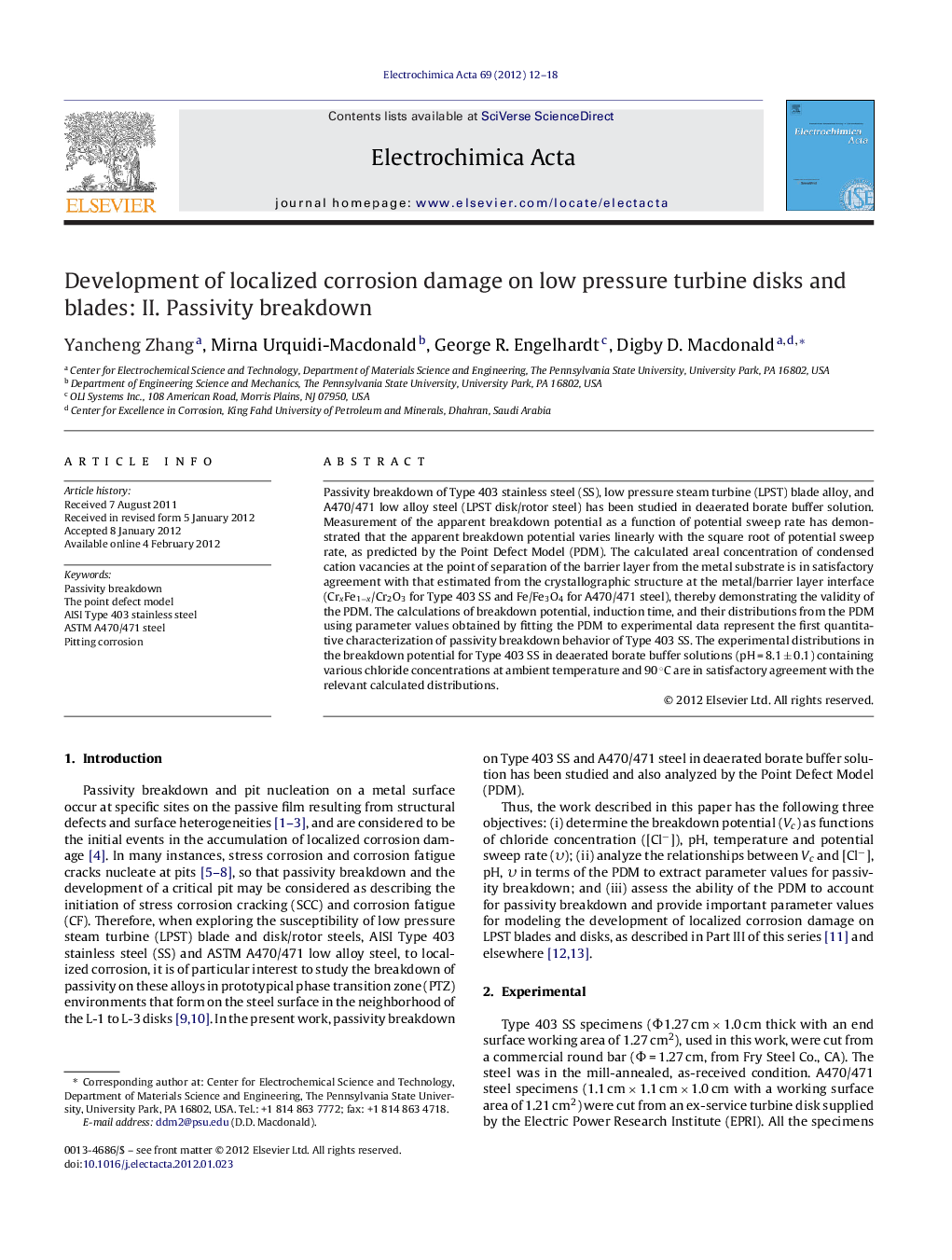| Article ID | Journal | Published Year | Pages | File Type |
|---|---|---|---|---|
| 188719 | Electrochimica Acta | 2012 | 7 Pages |
Passivity breakdown of Type 403 stainless steel (SS), low pressure steam turbine (LPST) blade alloy, and A470/471 low alloy steel (LPST disk/rotor steel) has been studied in deaerated borate buffer solution. Measurement of the apparent breakdown potential as a function of potential sweep rate has demonstrated that the apparent breakdown potential varies linearly with the square root of potential sweep rate, as predicted by the Point Defect Model (PDM). The calculated areal concentration of condensed cation vacancies at the point of separation of the barrier layer from the metal substrate is in satisfactory agreement with that estimated from the crystallographic structure at the metal/barrier layer interface (CrxFe1−x/Cr2O3 for Type 403 SS and Fe/Fe3O4 for A470/471 steel), thereby demonstrating the validity of the PDM. The calculations of breakdown potential, induction time, and their distributions from the PDM using parameter values obtained by fitting the PDM to experimental data represent the first quantitative characterization of passivity breakdown behavior of Type 403 SS. The experimental distributions in the breakdown potential for Type 403 SS in deaerated borate buffer solutions (pH = 8.1 ± 0.1) containing various chloride concentrations at ambient temperature and 90 °C are in satisfactory agreement with the relevant calculated distributions.
